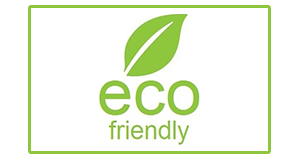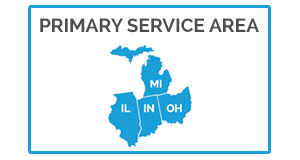- What is CO2 blasting?It is a process in which dry ice particles are propelled at high velocities to impact and clean a surface. The particles are accelerated by compressed air, just as with other blasting systems. Today, most applications are able to use standard shop air, in the 80 – 100 psi range.
- How does it remove contaminants?
It depends on what you’re cleaning. If you’re removing a brittle contaminant such as paint, the process creates a compression tension wave between the coating and the substrate. This wave has enough energy to overcome the bonding strength and literally pop the coating off from the inside out. If you’re removing a malleable or viscous coating such as oil, grease or wax, the cleaning action is a flushing process similar to high-pressure water. When the particles hit, they compress and mushroom out, creating a high-velocity snow flow that actually flushes the surface.
- How does this differ from how sandblasting works?
Sandblasting is similar to using an ice pick whereas dry ice blasting is similar to using a spatula. Sand cuts or chisels away the contaminant. Dry ice lifts it away.
- What happens to the dry ice once it strikes the surface?
It sublimates and returns to the atmosphere as carbon dioxide (CO2) gas. CO2 is a naturally occurring element that constitutes less than 1% of our atmosphere.
- Does the CO2 cool the substrate?
Yes, but generally not as much as you might think. The amount of cooling is dependent upon three main factors: mass of the targeted surface, dwell time and ice usage rate. Typically, a tire mold may start at 350°F and drop to 325°F during cleaning. With a very thin mold, the drop can be much greater. Generally, however, cooling is not a concern and only rarely does it affect cleaning performance.
- How are dry ice pellets made?
Pellets are made by taking liquid CO2 from a pressurized storage tank and dropping it to ambient pressure to produce snow. The snow is then pushed through a die to make pellets. The system is a mechanical, circular process in which the pellet extrudes very slowly before coming into contact with a pin which breaks it off at a very uniform length. The other type of system uses a hydraulic ram to form “spaghetti” which breaks off at random lengths as it passes through the die.
- What is the difference between a one-hose system and a two-hose system?
In the Phoenix two-hose system, the dry ice travels in one hose and the high-pressure air in another. The two are not mixed until just before the pellets exit the end of the nozzle. In a one-hose system the pellets and air are mixed together in one hose. The primary advantage of our two-hose system is reduced ice consumption. We deliver virtually all of our ice to the surface being cleaned. The one-hose system can stake no such claim. In U.S. government testing, it was determined that the one-hose system with a 25-foot hose lost 50% of its ice before reaching the surface. When the hose was lengthened, the losses increased. The Phoenix system can often save tens of thousands of dollars annually in dry ice costs alone when compared to one-hose systems.
- How much dry ice should I expect to use?
This is an important question to ask because the amount of dry ice you need to clean effectively can vary dramatically within the industry. With Enviro-Blast equipment, most customers need 1½-2 pounds-per-minute while the trigger is engaged. Of course, when we are cleaning, we won’t be pulling the trigger constantly. At a rate of 2 pounds-per-minute with 50% trigger time, we would use 60 pounds of dry ice in an hour.
- How is dry ice blasting used in foundries?
CO2 blasting equipment is used in foundries worldwide to clean core boxes and permanent molds. Not only does dry ice blasting increase production by decreasing downtime, but it also eliminates mold damage, preserving the critical tolerances and greatly extending the life of the expensive tooling. You don’t have to be an industrial giant to enjoy the cost benefits of CO2. There are a large number of small to medium-sized foundries in the U.S. and abroad who successfully use Enviro-Blast equipment to clean.
- What can CO2 be used to remove?
Paint: The removal rate is dependent on a great many factors including: the underlying surface profile of the substrate; the thickness of the coating; the adhesive bond strength of the coating; and the cohesive strength of the coating (generally a function of age).
Grease, oil or weld slag: Yes, but dry ice doesn’t dissolve the oil and doesn’t make it disappear so you must have an acceptable way of handling it when it is relocated by the blasting process.
Rust: Yes, it tends to remove the loosely adhered oxidation and salts, but will not remove the deeply adhered oxidation. You will not get a white metal finish. To do that you have to remove the surface metal, something the dry ice blasting process cannot do.
Glass: It can, but some prior testing is required to avoid shattering the glass.Wood: Dry ice blasting will raise the grain on the wood, leaving a finish similar to that of sandblasting. If you need a smooth wood finish, dry ice blasting is not the answer.
- Is the system noisy?
Yes. Noise is a function of air volume and air velocity. Within the nozzle, the stationary air is sheared by the high velocity air causing turbulence which creates noise. The level can range from 85 – 130 db. Hearing protection is required.
- Is it okay to blast in an enclosed area?
Yes, with proper ventilation. Because CO2 is 40% heavier than air, placement of exhaust vents at or near ground level is recommended when blasting in an enclosed area. In an open shop environment, existing ventilation is sufficient to prevent undue CO2 buildup.



